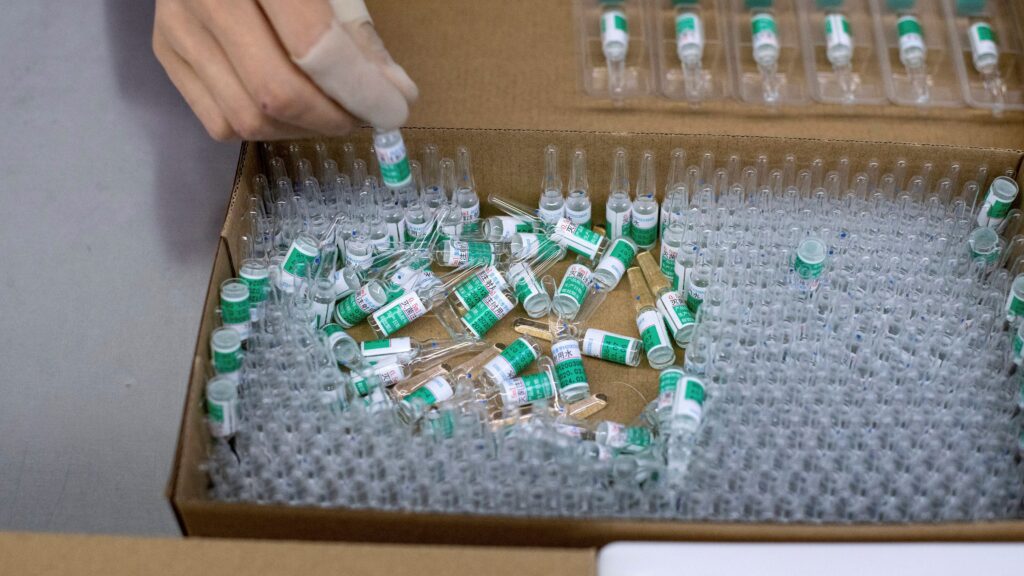Rabies has been in global health’s crosshairs for years. Around the world, the viral infection kills about 70,000 people a year — and since as early as 2015, groups including Gavi, the Vaccine Alliance, have had plans to shore up vaccine efforts to reduce the number. At one point, Gavi planned to include human rabies vaccines in its 2021 investment strategy — but then the Covid-19 pandemic got in the way.
Now, it’s finally taking action. On Thursday, Gavi announced a plan to expand global access to human rabies vaccines, reaching over 50 countries. Most of Gavi’s efforts focus on vaccinating as many people as possible against common viral threats. But for rabies, it’s confronting a different kind of challenge: providing vaccines for post-exposure prophylaxis to the right people, at the right time.
advertisement
Rabies is one of few diseases that can be effectively treated by vaccines after exposure. Most often transmitted by a rabid dog bite, the virus enters through the bite and travels through peripheral nerves, then up the spinal cord and to the brain. Once it reaches the brain, the resulting inflammation is almost always fatal. Post-exposure prophylaxis, delivered soon enough after a bite, can slow and stop the virus’s approach to the brain with a combination of wound washing, the rabies vaccine itself, and immunoglobulins.
According to the World Health Organization, 95% of rabies deaths occur in Africa and Asia — in large part due to the limited availability of rabies vaccines. In the United States, around 60,000 people annually receive post-exposure prophylaxis following potential rabies exposure, and fewer than 10 human deaths occur per year.
Ryan Wallace, the lead for the rabies epidemiology team at the Centers for Disease Control and Prevention, said that since the rabies vaccine is “responsive” and not “routine” like other vaccines with scheduled administration, challenges with procurement and distribution are inevitable.
advertisement
“It’s very difficult for a non-routine vaccine to be available in all places at all times,” Wallace said. “A lot of those 70,000 people that die every year, they didn’t even ask for a vaccine, they weren’t aware, the health services weren’t there, the veterinary services weren’t there, and they didn’t seek it.”
The new program is aligned with the Zero by 30 campaign, a plan outlined by the WHO and others in 2018 to end human deaths from rabies transmitted by dogs by 2030. Gavi plans to prioritize reaching under-immunized children and disadvantaged communities. Low-income countries can apply for support for the rabies post-exposure prophylaxis vaccine starting in July of this year, with support based on the budgeting plan submitted by the country requesting aid. Gavi will not be providing support for immunoglobulins.
Charles Rupprecht, a WHO expert technical advisor on rabies and former chief of the rabies program at the CDC, said there’s a misconception on what limits access to human rabies vaccines: It’s not about manufacturing enough of the vaccines, but rather providing a way for countries to pay for them.
“There’s no real shortage in biologics that producers can produce — either Big Pharma or smaller ones in some of the most effective markets,” Rupprecht said. “The difficulty has been in trying to define what those markets are, and to try to define need and to prioritize rabies prophylaxis.”
Vaccine banks “can bring lower prices and more stability to vaccine markets,” Wallace said, by purchasing high-quality vaccines in bulk. “Resolving vaccine-access issues will take time, but initiatives like Gavi’s human rabies vaccine program improve access to low-cost, high-quality human rabies vaccines.”
There are challenges beyond acquisition. Terence Scott, director of programs at the Global Alliance for Rabies Control, said the biggest obstacle for governments is distributing vaccines from the national level to the people that need it most.
“We see that in many countries, the major district hospital will have supply of vaccine and post-exposure prophylaxis,” said Scott. “But then in the more rural clinics, they won’t have access to that.”
Beyond mitigating issues with logistics of distribution and supply chain, Scott highlighted training of medical professionals and education of at-risk populations as additional prerequisites to ensuring Gavi’s proposal is used effectively.
“It needs to be a multifaceted approach that encompasses things like education — educating people that when they are exposed, they need to go to the clinic and seek medical advice,” Scott said.
In spite of potential challenges Gavi faces in implementing the program, Wallace expressed optimism on the eventual outcome.
“There’s hundreds of thousands of lives that are going to be saved over the next decade through this program,” Wallace said.

